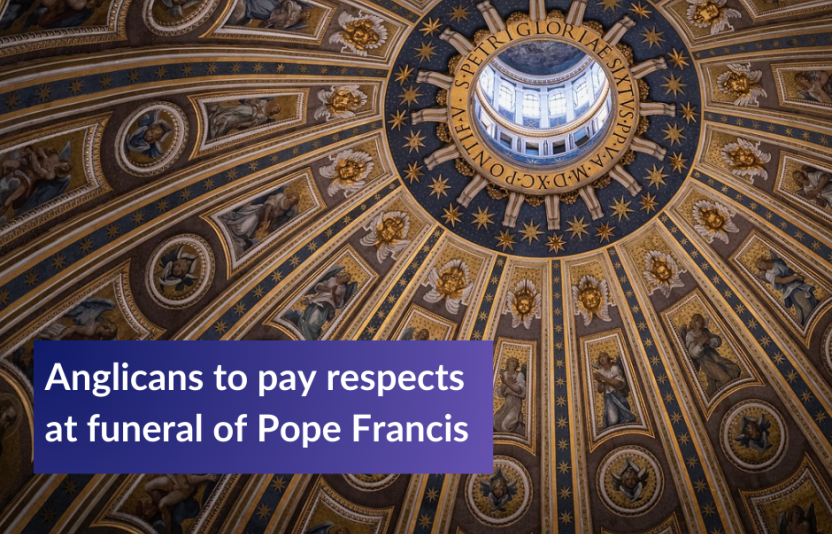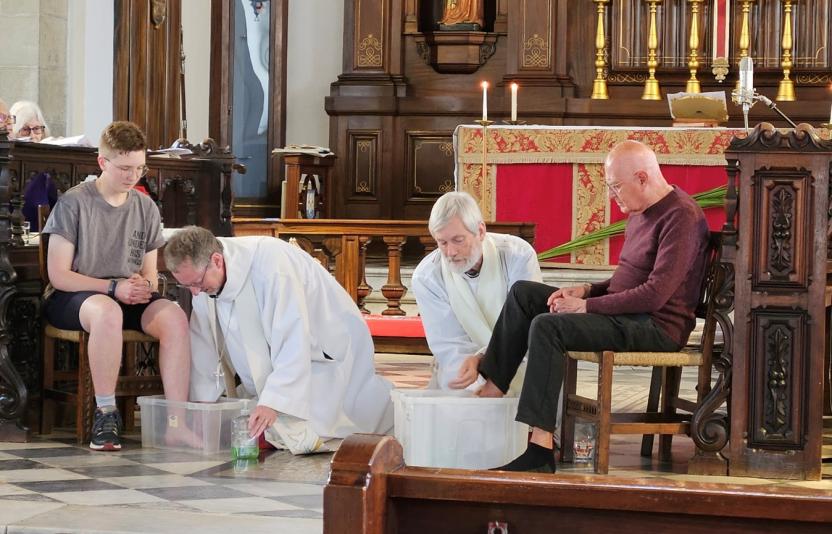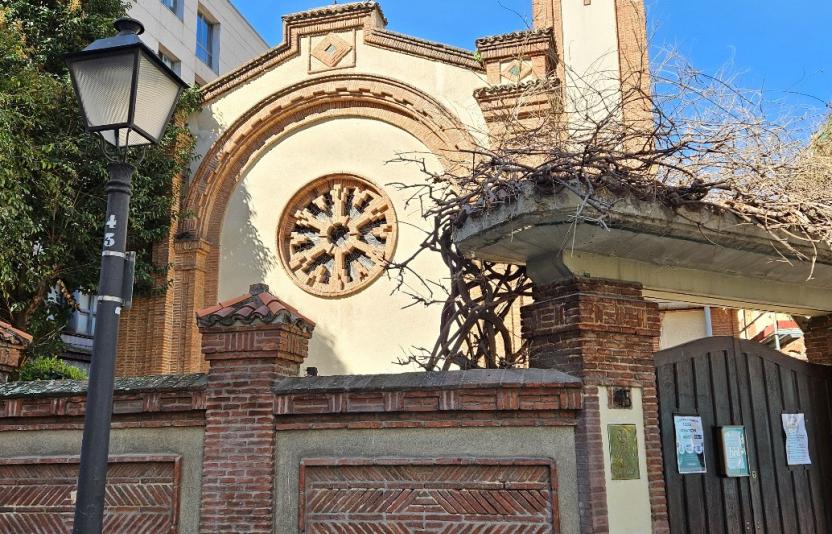Bishop Robert reflects on the life and funeral of Pope Francis

The Funeral of Pope Francis
‘Papa Francesco…He was a very, very, very good pope!’, said my excited Roman taxi driver, talking energetically with his hands as we travelled into Rome. It felt like the whole world had gathered in Rome, either in person or online. I was immensely privileged to be part of the official 10-person international Anglican Communion delegation invited to be close to the heart of the proceedings.
Praying as Pope Francis lay in state – April 25
At 16:00 on the eve of the funeral, the Anglican delegation was invited to St. Peter’s Basilica to pray besides the body of Pope Francis as he was lying in state. The basilica was full of people; the atmosphere was subdued. Ushers in white bow ties skilfully guided us through the crowds to the catafalque so we could see Francis.
Seeing the worldwide leader of the Roman Catholic Church lying in state was a stark reminder of the finality of death. His body was clothed in red vestments and mitre, but from the white/grey flesh of his face, we could see this was evidently not Frances. His spirit had departed this life several days before. As we looked at his mortal remains, we were reminded that death comes to all, and even the most beloved of Popes die. Yet we were also reminded of the enduring significance of the Christian hope of the resurrection of the body.
Attending the funeral of Pope Francis – Saturday April 26
On the day of the funeral, ecumenical religious guests assembled at a hotel some distance from the centre of Rome which acted as a marshalling point. From there we were transported to the Vatican. The Anglican delegation was led by Archbishop Marinez, the first female primate of Brazil and bishop of the Amazon. It seemed highly appropriate that our leader was from South America, given that Pope Francis was the first Pope from Latin America and was also a passionate advocate for environmental justice.
Many members of the Anglican delegation are selected because of their ongoing involvement in ecumenical dialogue between Anglicans and Catholics. Archbishop Marinez Bassotto, Archbishop Hosam Naoum and myself (as Co-Chair), are involved with IARCCUM – the International Anglican Roman Catholic Commission for Unity and Mission. Archbishop Philip Freier, from Melbourne, is the Anglican Co-Chair of ARCIC – the Anglican Roman Catholic International Commission. The delegation was also supported by the Anglican Centre in Rome, the Anglican Communion Office and Fr. Martin Browne, of the Dicastery for Promoting Christian Unity at the Vatican.
Sitting alongside a diverse Christian family
The Anglican delegation, together with our local clergy in Rome, and other ecumenical guests, were given special seats at the front of the proceedings. From the square and facing the podium with St. Peter’s Basilica behind it, the ecumenical delegates were on the left and the heads of state on the right. We were able to see various crowned heads, presidents and prime ministers arrive, and to hear the applause for the arrival of President Zelensky. We were seated and in place about two hours before the funeral began, Anglican bishops robed in distinctive black rochet, chimere and preaching scarf. The square was already full. Over time, the crowds only increased so that there were people on roof tops and on the approach roads to the square. Was it 250,000 or 400,000? I have certainly never seen so many people in one place.
The period before the service started provided opportunity to catch up with ecumenical friends…Coptic, Protestant, Old Catholic. The seating was arranged so that the senior two representatives of each church tradition were right at the front. Ecumenical Patriarch Bartholomew was seated in a row of one, right at the front. His position, as leader of the Eastern Church and the senior ecumenical representative, was thus respected.
The service was a mass and, of course, ecumenical representatives did not receive communion. But we were, nonetheless, very much included. Our seating, adjacent to Roman Catholic cardinals and bishops, emphasised the high degree of welcome we received.
A global celebration of Pope Francis
The service for Pope Francis was mainly in Latin, but the 87-page service booklet also included English and Italian translation. The service was led by two magnificent choirs – a mixed male/female choir that was seated at quite close to us and the choir of the Sistine Chapel that we could hear but was not visible from where we were sitting. One of the Bible readings was in English. The prayers were in a wide range of languages including Chinese and Arabic. The effect was to emphasise that this was a truly global occasion.
The service was quite long, over two hours, and we were sitting outdoors under the Roman sun – so I was grateful for a hat! But the whole effect was immensely powerful. It was as if the hopes and fears of the world had been identified with this one man, or at least with the Saviour whom he represented. The sermon delivered by Cardinal Re emphasised Francis’s humanity, his concern for the poor, the marginalised and the migrant; his courage in preaching the gospel; his underlying commitment to evangelisation; his commitment to ecumenical working and his openness to dialogue with other faiths – made known most particularly through a highly risky visit to Iraq.
At the conclusion of the celebration of the mass, we shared in a long litany which recalled the saints, martyrs and popes throughout the ages. This long list of individuals and groups stressed Pope Francis’s place amongst the communion of saints. It was a wonderful reminder to all of us that the church spans not just every place but also extends through centuries of time.
The service concluded with beautiful byzantine rite commendations and prayers sung by a third choir, and offering music in a quite different and hauntingly beautiful genre. A final sung rendition of ‘Ave Maria’ and the vast congregation was invited to disperse.
We thus said farewell to a great pope, an inspirational leader of Christians throughout the world and an exemplary disciple of Jesus Christ. Many members of the Catholic church told us how grateful they were for the presence and support of ecumenical friends and guests. For me and for us it was a huge privilege, a unique moment of Christian togetherness and an unforgettable event in the 21st century history.
Journeying outwards and continuing with hope
On the plane journey out of Rome, I reflected on the degree to which I mourned the passing of Pope Francis. On the one hand, was it pretentious to suppose that I had sufficient of a relationship with the most significant religious leader in the world to begin to pretend that I could be mourning his loss? On the other hand, I reflected on some very significant encounters with him: accompanying him at a service at All Saints Rome, being twice commissioned by him to go out in mission with a Roman Catholic partner bishop. In addition, there is the inspiration I have taken from his encyclicals on subjects such as evangelism and care for creation. This is indeed a man who has been influential on my own spiritual journey, both personally and theologically. There is no doubt many many thousands of others who will say the same. He was indeed, a very, very, very good pope. I will miss him. The world will miss him.
The Easter hope, however, is that death is swallowed up in victory. The funeral of Pope Francis, whilst solemn, repeatedly returned to the prayer that Francis might be delivered from death, welcomed into eternal peace, and raised up on the last day. Meanwhile, the work of the Church on earth continues. The divine mission does not depend on one or two extraordinary individuals. The mission is God’s, and it continues by the power of his Spirit. Whilst mourning his loss, we therefore draw inspiration from Frances, and look eagerly to what God may have in store for the future in continuing the mission to which Frances gave his life so fully.
Bishop Robert Innes


